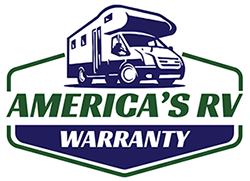
When buying an extended warranty, the options can be overwhelming. The different policies and add-ons can confuse RV owners, leaving them unsure how the plan saves them money. Nothing seems simple about finding the right warranty plan.
Warranties are complex, but they’re straightforward. With a little information, it’s easy to understand. Warranties assist with repair costs when an item suffers mechanical breakdown. Where plans differ is in which items they cover.
There are two main categories of extended warranties: Exclusionary policies and inclusionary policies. They may offer similar coverage, but they do so in different ways.
Exclusionary policies are the most comprehensive plans offered for RV extended warranty coverage. They are also the simplest policies to understand. An exclusionary policy lists the items that are not covered under the policy, and anything not listed under the exclusions is covered. America’s RV Warranty offers the Complete plan, an exclusionary policy for motorhomes and towables.
Warranties cover mechanical failure, so the policy specifically excludes damage from accidents, weather, or fire. Also excluded are nonmechanical items and items that are replaced through normal operation, such as oil filters. Here are a few examples:
Often called listed-item coverage, inclusionary coverage works the opposite way, providing a detailed list of what’s covered. If it’s not on the list, it is not covered under the plan. Here are a few examples of items included in an inclusionary policy:
Inclusionary plans allow customers to find the level of coverage that suits their needs. With America’s RV Warranty, listed item coverage for motorhomes comes in three different levels: Basic, Plus, and Total.
The Basic plan covers the engine and transmission, the most expensive items to repair on a motorhome. For those who want the biggest expenses covered, this plan offers peace of mind.
The Plus coverage adds several automotive coverages to the engine and transmission, including steering components, brake components, engine cooling components, chassis AC components, and more.
The Total plan goes one step further adding coverage for the items inside the coach, or home, of the RV. Items include fresh and waste water components, generator, AC and heating components, kitchen center components, and many more. For towable RVs, the Total Coverage includes items in the coach as well as the suspension.
For both exclusionary and inclusionary policies, extra coverage options are available. These coverages do not come standard with RV extended warranty policies. Not every RV owner will need them, but they may help bring peace of mind to the road.
Extended warranty companies offer RV services like roadside assistance, towing, and travel expenses, but they are usually separate from the policy terms. For this reason they aren’t on this list.
Most warranties are written for RVs that are used seasonally or occasionally. To get the proper protection for an RV that is your main residence or that you travel in year-round, you’ll need coverage for full-time use. In fact, if you are using your RV full-time without this add-on, you could be liable for all costs (this is true for all major RV warranty companies).
When an RV is hooked up to an external power source, it is prone to power surges. Nearby lightning strikes or mismanaged power grids can send a surge of electricity through the lines. Issues with the electrical hookup (often called a power pedestal) can also cause these surges. This coverage will pay for the repair of items damaged in the power surge, covering up to $2500 of repairs or replacement.
Commercial Use add-ons extend coverage to RVs that are owned or operated by a business.
This add-on provides coverage for failure of a covered item even when its failure is caused by a non-covered part.
This add-on covers navigation components on motorhomes. Coverage includes the compass, global positioning system (GPS), onboard communications system, GPS satellite antenna, back-up warning system, and electronic driver information display and module.
This coverage pays for the repair or replacement of tires or wheels if they are damaged by a road hazard like a nail or a pothole. If the RV is a towable, this coverage also applies to the tow vehicle while it is towing the RV.
No matter the company, no RV warranty covers everything. Damage due to accidents or weather will not be covered—this is where RV Insurance helps. Warranties cover the costs of parts and labor to repair covered items, but not damage caused by those items. This means if the refrigerator leaks and ruins the carpet, the warranty will cover the refrigerator, but not the carpet.
Warranties don’t cover maintenance. The RV owner handles the costs of changing the oil and replacing fluids. In fact, an RV must receive maintenance, otherwise failures might not be covered. Maintenance is also required to satisfy the manufacturer’s warranty. The RV dealer sometimes offers discounted or free maintenance during the first year.
By reading through the terms and asking questions, RV owners can understand exactly when and how they will be protected by a warranty. This knowledge allows them to get the most out of their coverage and be prepared when something breaks down.
